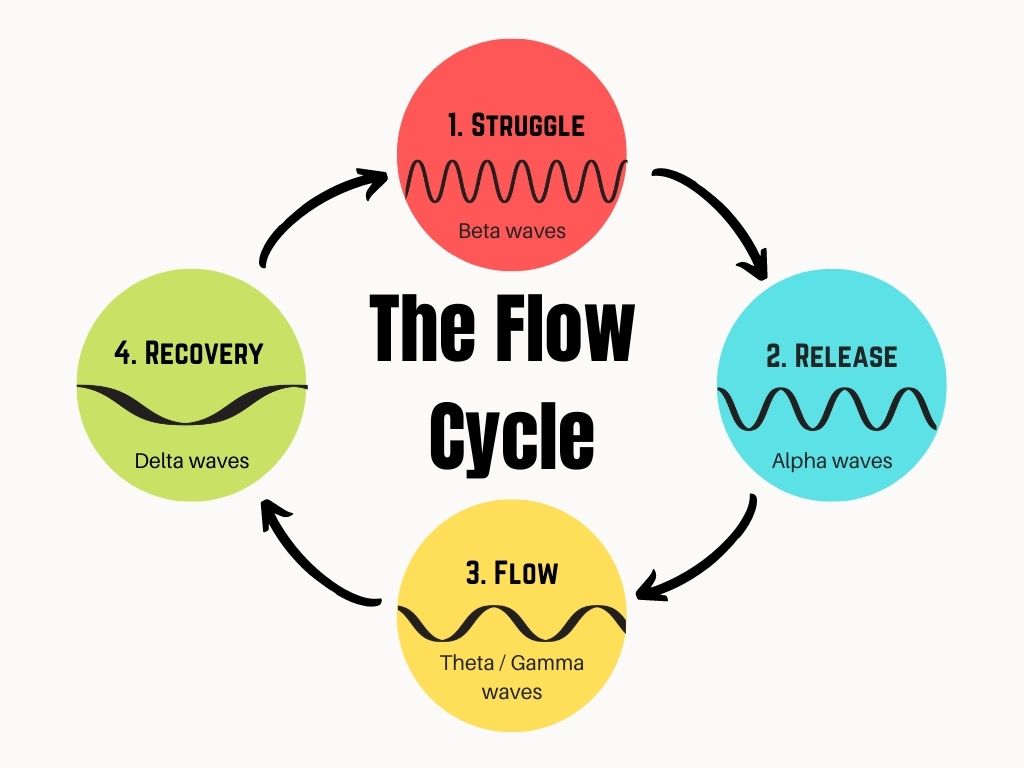Most people attribute Einstein’s groundbreaking ideas to genius, but perhaps imagination is the better target.
Throughout his life, Einstein relied on mental visualisation to construct his theories. He completely changed our understanding of reality not (just) by sitting at a desk and solving math problems, but by running thought experiments in his head.
While imagination might seem less like a scientific tool than an artistic one, Einstein realised its potential after attending a school that taught the theories of Swiss educator Johann Pestalozzi, who believed that knowledge was formed visually.
This is something almost all of us can do, and even better, most of us find imagination an easier activity than complex math—it is innately human and can be both fun and productive.
Visualization can help you find creative solutions to the problems and puzzles in your life, so let’s take a closer look inside the mind of Einstein to see if we can learn some lessons.
General and Special Relativity
Einstein had many notable thought experiments, which had him chasing light beams and falling down endless elevator shafts. Here are two of his more notable visualizations:
Picture a train chugging along the tracks at a constant speed. There are two lightning strikes along the embankment, one up at the front of the train and one at the rear.
If you are standing on the embankment halfway between the two lightning strikes, it appears that they strike simultaneously.
However, if were you to stand in the middle of the train, they would not appear perfectly timed—the one at the front would strike before the one at the back.
This showed that the timing of distant events depends on the observer, and it lead to his theory of special relativity.
“We thus arrive at the important result: Events that are simultaneous with reference to the embankment are not simultaneous with respect to the train,” wrote Einstein.
In another thought experiment, he switches the lateral movement of the train for the vertical movement of an elevator.
He considers how weightless you would feel in an elevator free falling without end—it’d feel much like you would floating out in space.
He then changes direction, sending the elevator upwards, noting that the force that would pin you to the ground is the same as the force of gravity when you’re standing with your feet on the ground.
This lead to his ‘equivalence principle’—the effects of gravity are the same as that of acceleration in the absence of gravity.
Of course, the math had to come in support of his ideas, and Einstein backed up his thought experiments with proofs. Nonetheless, it’s those vivid imaginations that up-ended our understanding of reality.
“Logic will get you from A to B. Imagination will take you everywhere.” — Einstein
How to Run Successful Thought Experiments
Your imagination is a great lab to run experiments in without all the constraints and negative repercussions that plague us in reality.
“Survival machines that can simulate the future are one jump ahead of survival machines who can only learn on the basis of overt trial and error. The trouble with overt trial is that it takes time and energy. The trouble with overt error is that it is often fatal. Simulation is both safer and faster.” — Richard Dawkins
With your imagination, you can build nuclear bombs, go out on a first date, survive on a deserted island, or fight a lion. Of course, good thought experiments will be more grounded in reality than a complete flight of fancy.
So the first step in successful visualizations is to understand the relevant reality:
1. Build Accurate Mental Models
You will need to learn the initial building blocks so you understand the constraints. What are the laws you cannot break? What are the current dominant theories? What are their limitations?
Einstein knew the theories of Newton and others, and was very good at math, so he knew what problems he wanted solve and what limitations there were in seeking a solution.
Like Einstein, Nikola Tesla was fond of running his own thought experiments based on an accurate understanding his field:
“When I get an idea I start at once building it up in my imagination. I change the construction, make improvements and operate the device in my mind. It is absolutely immaterial to me whether I run my turbine in thought or test it in my shop.”
This is only possible if Tesla understands the nature of what it is he’s building. It’s important not to fool yourself here, if your base understanding is inaccurate your thought experiments are likely to lead you further astray.
2. Run Your Thought Experiment
Now you can put your feet up, stare out the window, and get to work.
Using the models you’ve built, you can begin running through different situations and scenarios in your head. Think of metaphors for the problems, play around at the edges of understanding.
Recall where the current theories falter and try to find new ways of looking at the problem. Be creative and let curiosity take you to unexpected places, this is your imagination after all.
3. Hold an Imaginary Council
An interesting addition to your thought experiment can be feedback from imaginary people. Entrepreneur and investor Marc Andreessen does as author Napoleon Hill did— engage in arguments with mental models of people they’re familiar with.
“I have a little simulation of Peter Thiel,” says Andreessen. “He lives on my shoulder right here. I argue with him all day long.”
Likewise, Napoleon Hill wrote: “Every night, over a long period of years, I held an imaginary Council meeting with this group whom I called my ‘Invisible Counselors.’”
This is a helpful way of getting new perspectives in a fraction of the time it would take to actually explain and converse with the real person.
4. Run a Real-World Experiment
If your thought experiment leads you to a potential solution or insight, the final step will be ensuring it all holds up out in the real world.
Testing and evaluating your ideas will rely on more established methods such as physically building something, running an actual experiment, or constructing logical and mathematical proofs, but will largely depend on the nature of your problem.
This will be all the more difficult if your thought experiments are pushing the laws of physics to a limit that is near impossible to test—Einstein could imagine travelling along a light beam, but speed-of-light travel is much more difficult in practice.
Sometimes thought experiments don’t have proven solutions, and are simply things for people to think about, such as the infamous Trolley Problem: should you save someone you love or a group of people you don’t from being run over?
Whatever the case, it’s time to leave the confines of your imagination, even if this is only to share your idea with other people.
Experimenting with Thought
A lot can happen when you disengage from the present reality and give your mind the freedom to roam. Our greatest stories, movies, music and art come from this place. Our future goals are designed and we plan our paths to achieving them.
But also our greatest scientific achievements and technological feats are born of imagination. Einstein used it well, as have Tesla and Galileo, while philosophers rely almost exclusively on them.
Visualizing and manipulating rich inner worlds should be the first tool used in any endeavour of creative problem solving—our modern understanding of the world speaks to that.
- Flow Experience Design: 20 Flow Triggers For Peak Performance - May 10, 2025
- How The Muse S Athena Works For EEG And fNIRS Neurofeedback - April 24, 2025
- The 10 Best Pomodoro Timer Apps For Remote Workers - April 11, 2025





 This website uses cookies to improve your web experience.
This website uses cookies to improve your web experience.